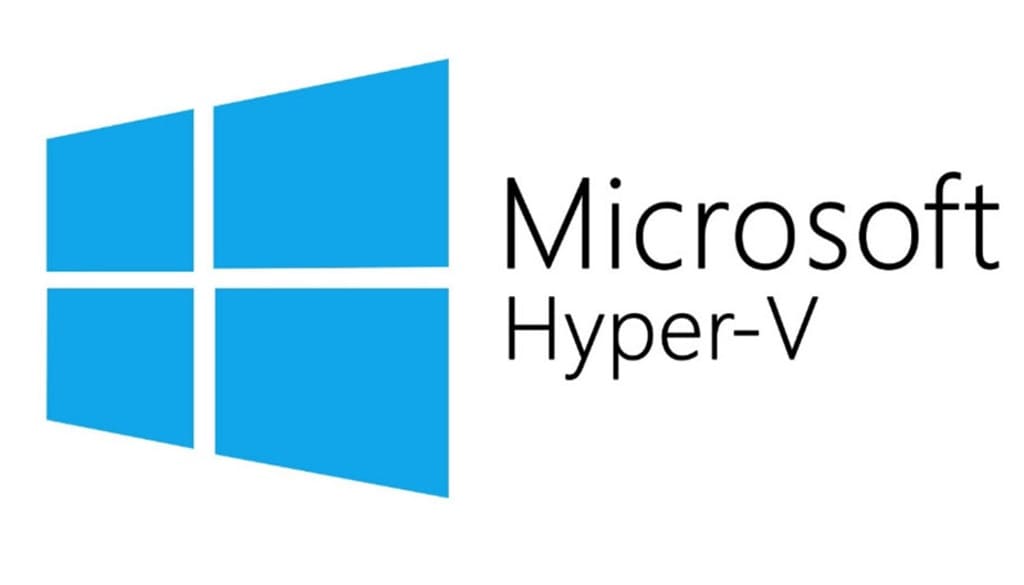Cómo crear una máquina virtual en Windows 10 usando el Administrador de Hyper-V, Powershell, y creación rápida.
Cree una máquina virtual con una consola Hyper-V Manager
1. Comienza tu Gerente de Hyper-V Consola y haga clic Nuevo;

2. En la lista desplegable seleccione Máquina virtual;
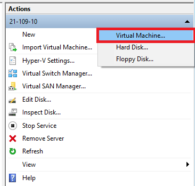
3. En la nueva ventana presione Próximo;
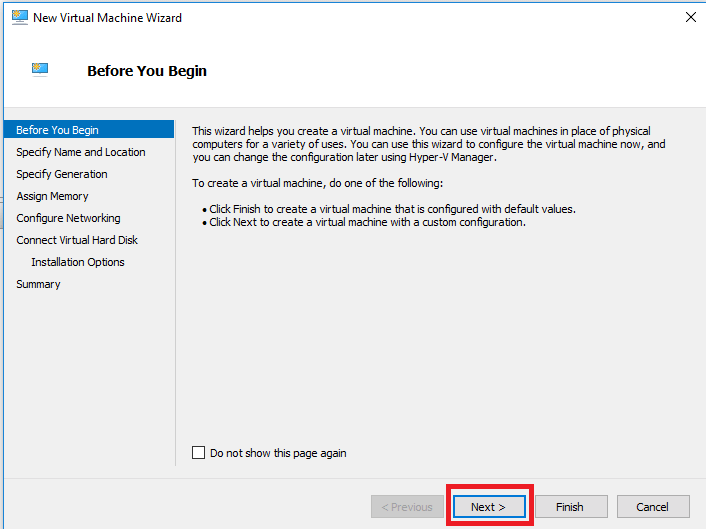
4. Enter the name of your VM, en mi caso 21-109-10-sccm.
NOTA: En esta etapa, you may change the folder in which vm config files store. O usar la configuración predeterminada como yo.
Hacer clic Próximo;
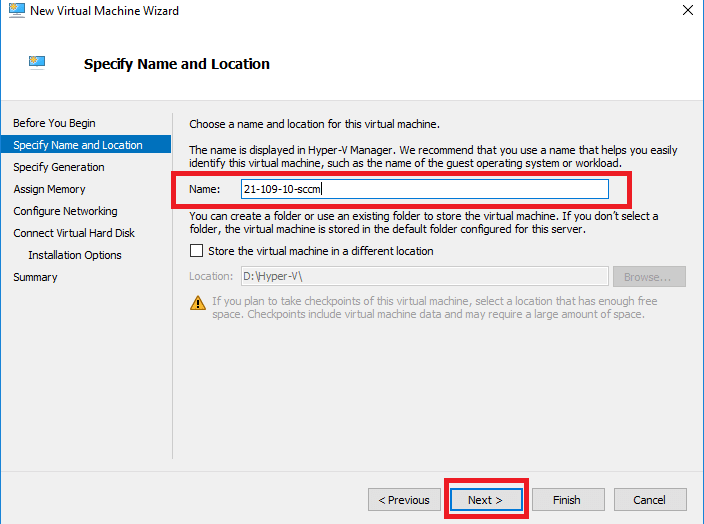
5. Seleccione el Generación of your VM. (para ventanas antiguas, Linux es mejor usarlo Generación 1). yo uso Generación 2. Hacer clic Próximo;

6. Enter the memory size for your VM. (Puedes configurar Utilice la memoria dinámica para esta máquina). Hacer clic Próximo;
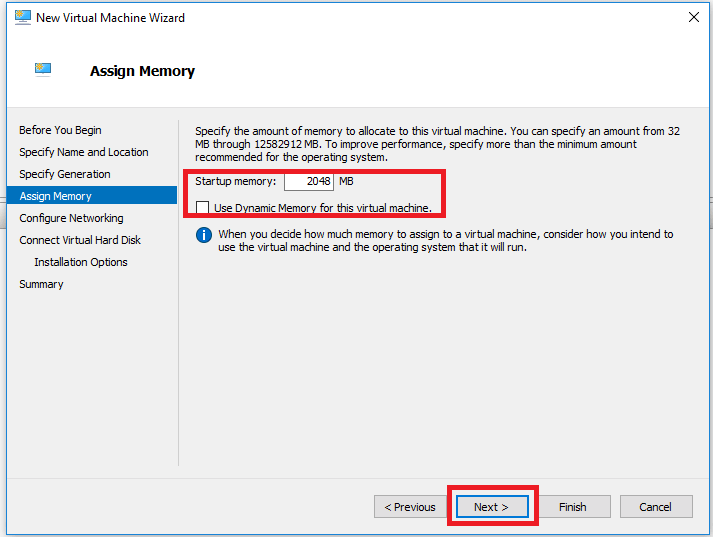
7. Seleccione una conexión de red preparada con anticipación. En este despliegue, yo uso Externo. Hacer clic Próximo;

8. Create a new one, usar VHD existente(incógnita), o seleccione Adjunte un disco duro virtual más tarde (para adjuntar más tarde). Mi VM Generation 2, entonces usa VHDX formato. Hacer clic Próximo;

9. Select from where you installed Operating System to VM or select Instalar un sistema operativo más tarde. yo uso preparado *.ISO of Windows 10 1607 x64 UNO, almacenado en la carpeta D:\ISO. Hacer clic Próximo;

10. Verifique la información resumida y haga clic Finalizar;
11. Our VM was created!
Pero no te apresures a ejecutarlo.. Puedes hacer una configuración más profunda..
Crear una máquina virtual con Windows PowerShell
Si desea crear un entorno virtual a gran escala con varias máquinas virtuales ejecutándose al mismo tiempo, Powershell es la herramienta para elegir.
1. Correr WindowsPowerShell (Administración).
2. Ejecute el siguiente script:
New-VM -Name <Nombre> -Path <Path> -NewVHDPath <VHDPath> NewVHDSizeBytes <Memoria> -Generación <Generación> -MemoryStartupBytes <Memoria> -SwitchName <SwitchName>
3. Check in Hyper-V Manager to verify whether the VM has been created.
The PowerShell script can be extended by including additional configuration options. Por ejemplo, you can set up the VM memory by including the following cmdlets:
Set-VM -Name <Nombre> -ProcessorCount <Number of Processors> -DynamicMemory -MemoryMinimumBytes <Memoria> -MemoryStartupBytes <Memoria> -MemoryMaximumBytes <Memoria>
To explore other PowerShell cmdlets and how they can help in managing a virtual environment, ejecuta este comando:
Get-Command -Module hyper-v | Out-GridView
You will see a list of all PowerShell commands, que puedes incluir en tu script.
Cree una máquina virtual con Hyper-V Quick Create
Hyper-V Quick Create was specifically designed to make the process of creating VMs even easier and faster, ya que se puede completar con solo unos pocos clics.
1. Abierto Hyper-V Quick Create;
2. Seleccione un sistema operativo de la lista de la izquierda, o instalar un sistema operativo invitado desde un archivo de imagen ISO (.ISO) o un archivo VHD (.vhd o .vhdx) haciendo clic Fuente de instalación local;
3. Hacer clic Cambiar fuente de instalación y seleccione el archivo requerido. The Secure Boot option can be checked only if the VM will run Windows;
4. Hacer clic Más opciones en la esquina inferior derecha;
5. Type the name of the VM;
6. Elija el interruptor virtual;
4. Hacer clic Create Virtual Machine para iniciar el proceso.

